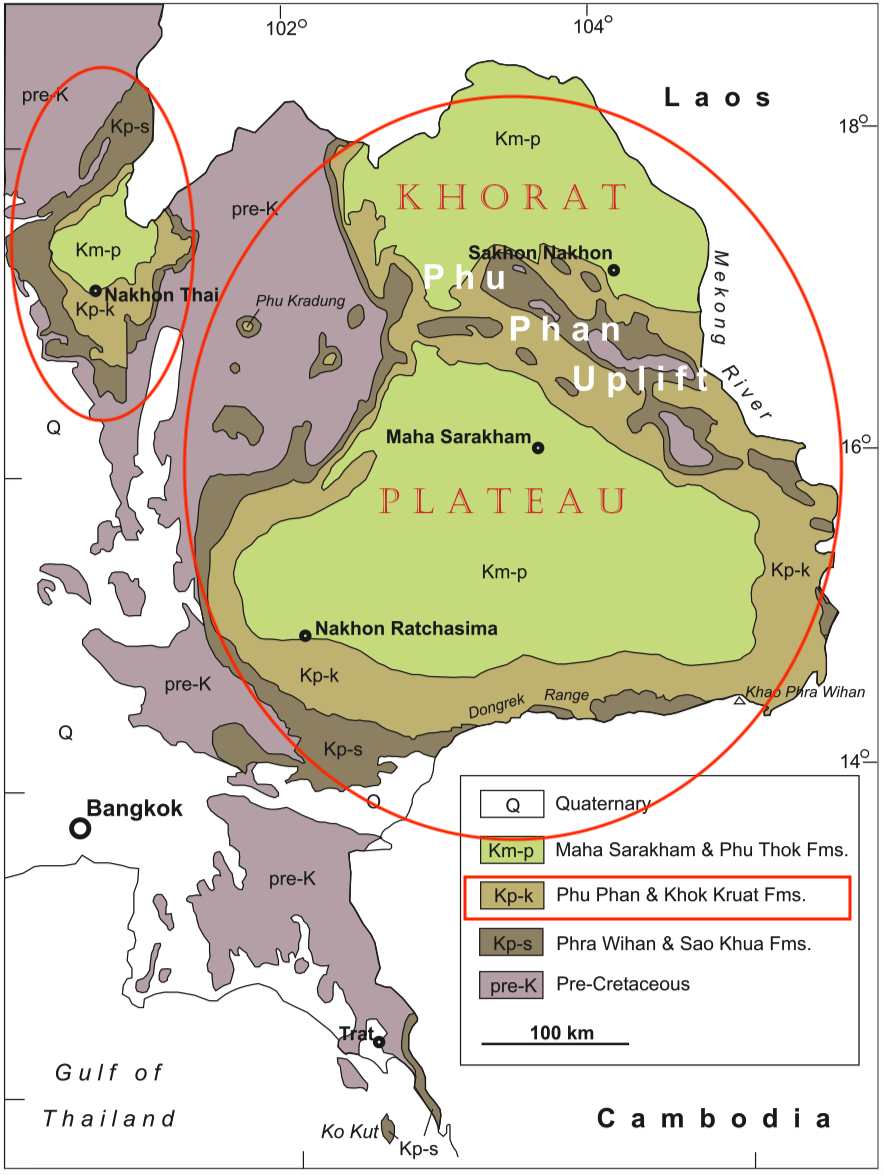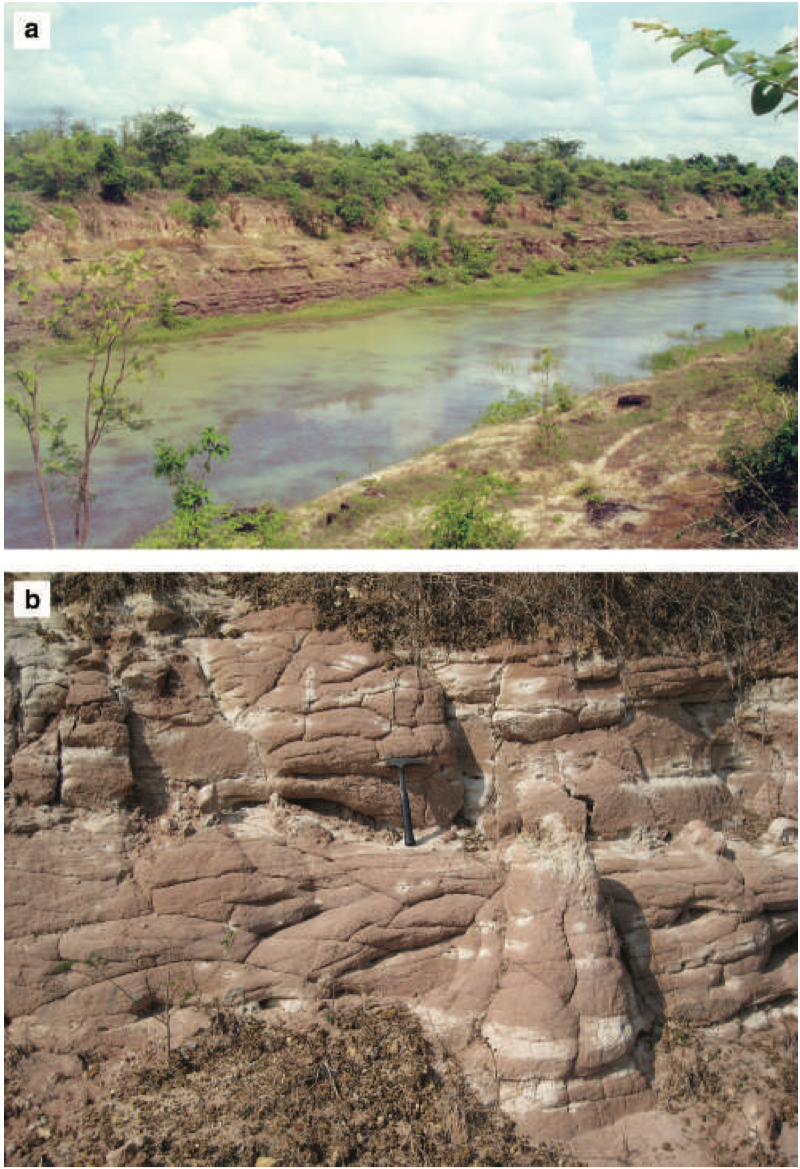Khok Kruat Fm
Type Locality and Naming
Synonym: หมวดหินโคกกรวด
Lithology and Thickness
Thickness: 709 m
[Figure: Khok Kruat Formation in NE Thailand. (a) Sandstones and siltstones exposed along Rimpao Dam spillway in Kalasin Province (photograph courtesy of T. Wongprayoon); (b) cross-bedded sandstone at Ban Phia Phan in Khon Kaen Province (Meesook, 2011).]
Relationships and Distribution
Lower contact
Upper contact
Regional extent
GeoJSON
Fossils
Dinosaur remains have been known from the Khok Kruat Formation since Buffetaut & Suteethorn (1983) described teeth and bone fragments which they were able to assign only to indeterminate theropods. At Ban Dong Bang Noi in Chiyaphum Province, jaws of the small ceratopsian Psittacosaurus were described as a new species, P. sattayaraki (Buffetaut & Suteethorn 1992), indicative of faunal relationships with northern Asia (Buffetaut et al. 1989) (Meesook, 2011). The dinosaur fauna of this formation has been reviewed by Buffetaut et al. (2005).
The Khok Kruat Formation has yielded remains of other vertebrates including crocodilians, fish (Cappetta et al. 2006; Cavin et al. 2007a, b; Cuny et al. 2008) and turtles (Tong et al. 2005). Some vertebrate fossils can be compared to forms from other parts of the world (Buffetaut & Suteethorn 1998) and so throw important light on the age of this formation. For example, the freshwater shark Thaiodus ruchae occurs in the Khok Kruat Formation and also in the Takena Formation of the Lhasa block of Tibet, the latter having been dated as Aptian–Albian on the basis of foraminifera (Cappetta et al. 1990) (Meesook, 2011).
Pieces of silicified wood in reddish-brown claystones and siltstones occur, but are rare and indeterminate. Outcrops have yielded only poor and indeterminate palynomorphs, but Sattayarak et al. (1991) suggest an Aptian age for the upper part of the formation based on borehole samples (Racey & Goodall 2009) (Meesook, 2011).
Age
Depositional setting
Additional Information

